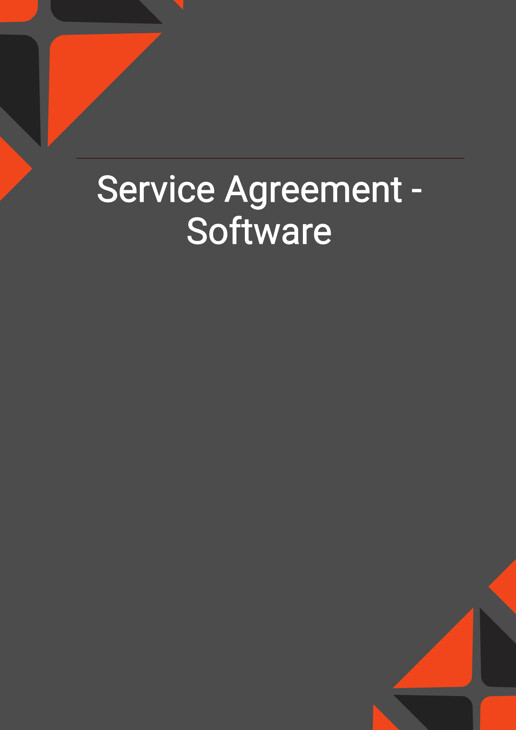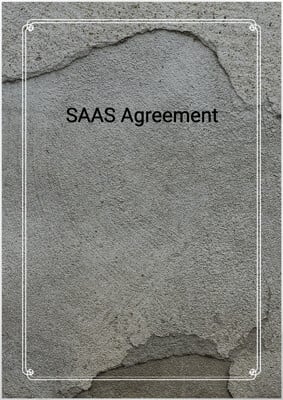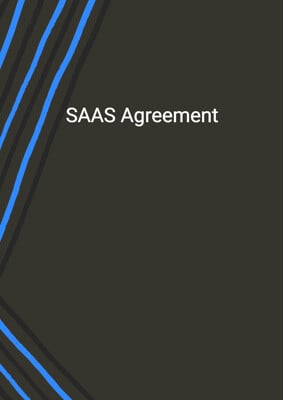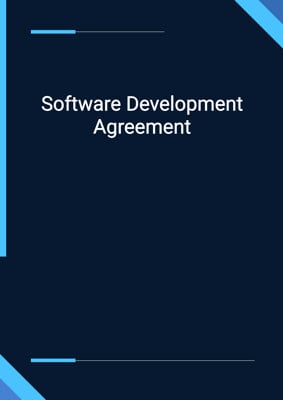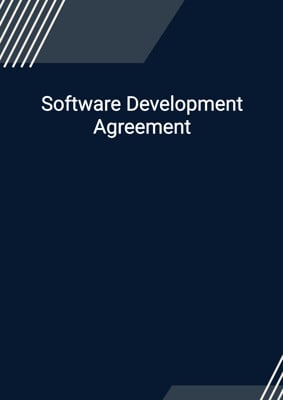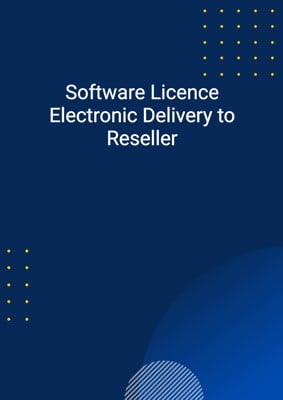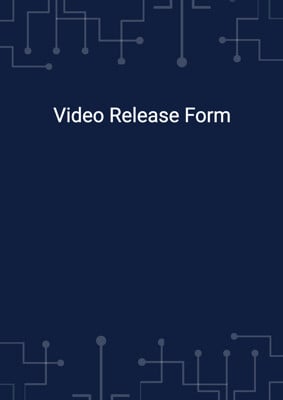How to Tailor the Document for Your Need?
01
Create Document
Fill in the details of the parties. You can click the "Fill with Member’s Information" button to complete it with information saved to your account.
02
Fill Information
Please fill in any additional information by following the step-by-step guide on the left hand side of the preview document and click the "Next" button.
03
Get Document
When you are done, click the "Get Document" button and you can download the document in Word or PDF format.
04
Review Document
Please get all parties to review the document carefully and make any final modifications to ensure that the details are correct before signing the document.
Document Preview
Document Description
The Service Agreement - Software is a legal document that outlines the terms and conditions between the company and the customer for the provision of software products and services. This agreement is important as it establishes the rights and obligations of both parties and ensures that there is a clear understanding of the scope of work, pricing, and timelines.
The entire document is divided into several sections, each addressing different aspects of the agreement. The interpretation section provides definitions for key terms used throughout the agreement. It ensures that both parties have a common understanding of the terminology used.
The engagement of the company section states that the customer engages the company to provide the services and products. It specifies the commencement date and completion date for the work. It also outlines the process for acceptance of the deliverables and the customer's rights in case of non-completion.
The licensed software section grants the customer a non-exclusive, non-transferable license to use the software provided by the company. It specifies the terms and conditions for the use of the licensed software, including restrictions on copying and sublicensing.
The consultancy services section outlines the requirements for the provision of consultancy services by the company. It includes details such as the scope of the services, the resources required, and the specifications or statement of work.
The software development section covers the development of software by the company based on the customer's requirements. It includes details such as the specifications, resources involved, and project plan. It also specifies the process for acceptance of the developed software.
The system integration section addresses the supply and integration of a system by the company. It outlines the requirements for the development of software, licensing of software, and integration of third-party software.
The acceptance section explains the process for acceptance of the products and services. It includes the performance of acceptance tests and the customer's rights in case of non-compliance with the specifications.
The customer's obligations section outlines the responsibilities of the customer, including compliance with the license terms, payment of fees, provision of resources, and assistance in the provision of services.
The company's obligations section outlines the responsibilities of the company, including compliance with the customer's directions, provision of documentation, compliance with laws and regulations, and performance of services with care and diligence.
The confidential information section addresses the protection of confidential information exchanged between the parties. It includes obligations to keep the information confidential, restrictions on disclosure, and procedures for handling unauthorized disclosure.
The ownership of intellectual property rights section clarifies the ownership of intellectual property rights in relation to background intellectual property and intellectual property created during the performance of the agreement.
The warranties section includes warranties provided by the company, such as ownership of software, non-infringement of intellectual property rights, absence of litigation, capacity and authority to enter into the agreement, and performance of the licensed software.
The indemnities and limitation of liability section outlines the indemnification obligations of the company and the limitation of liability for indirect, special, incidental, or consequential damages.
The dispute resolution section encourages the parties to resolve any disputes amicably and in good faith through negotiation.
The force majeure section addresses the parties' liability in case of delay or non-performance due to circumstances beyond their control.
The termination section specifies the conditions for termination of the agreement by either party, including insolvency events, non-payment, non-delivery of products or services, and material breach of the agreement.
The notices and service section outlines the requirements for giving notices under the agreement, including the methods of delivery and the addresses of the parties.
The assignment section prohibits the parties from assigning or transferring their rights and obligations under the agreement without the prior written consent of the other party.
The payment section specifies the terms of payment for the services and products, including invoicing, additional fees for excess usage, reimbursement of expenses, and penalties for late payment.
The no rights under contracts for third parties section clarifies that third parties have no rights to enforce the terms of the agreement.
The governing law and jurisdiction section specifies the governing law and jurisdiction for any disputes arising under the agreement.
The entire agreement section states that the agreement contains the entire agreement between the parties and supersedes all prior agreements and undertakings.
The further assurances section requires the parties to do everything reasonably necessary to give full effect to the agreement.
The variation section states that any variations or modifications to the agreement must be in writing and signed by both parties.
As witness, the agreement is signed by the duly authorized representatives of the parties on the specified date.
How to use this document?
1. Provide information: Enter the Contractor's and Customer's information in the agreement, including their principal place of business. This ensures that both parties are clearly identified.
2. Specify the scope of work: Clearly describe the products and services to be provided by the company. This ensures that both parties are aware of the specific requirements and deliverables.
3. Define the license terms: Specify the terms and conditions for the use of the licensed software, including restrictions on copying and sublicensing. This ensures that the customer understands their rights and obligations regarding the software.
4. Establish acceptance criteria: Define the acceptance tests for the products and services. This ensures that both parties agree on the criteria for determining whether the deliverables meet the specified requirements.
5. Outline payment terms: Specify the fees and payment schedule for the services and products. This ensures that both parties are aware of the financial obligations and the terms of payment.
6. Address confidentiality: Include provisions for the protection of confidential information exchanged between the parties. This ensures that sensitive information is kept confidential and not disclosed to unauthorized parties.
7. Clarify intellectual property rights: Specify the ownership of intellectual property rights in relation to background intellectual property and intellectual property created during the performance of the agreement. This ensures that both parties understand their rights and obligations regarding intellectual property.
8. Provide warranties: Include warranties provided by the company, such as ownership of software, non-infringement of intellectual property rights, and performance of the licensed software. This ensures that the customer has recourse in case of any issues with the products or services.
9. Address indemnities and limitation of liability: Include provisions for indemnification and limitation of liability. This ensures that both parties understand their obligations and limits of liability in case of any claims or damages.
10. Establish dispute resolution process: Include provisions for resolving disputes amicably and in good faith through negotiation. This encourages open communication and collaboration in case of any disagreements.
11. Specify termination conditions: Define the conditions for termination of the agreement by either party, including insolvency events, non-payment, non-delivery of products or services, and material breach of the agreement. This ensures that both parties understand the circumstances under which the agreement can be terminated.
12. Outline payment terms: Specify the terms of payment for the services and products, including invoicing, additional fees for excess usage, reimbursement of expenses, and penalties for late payment. This ensures that both parties are aware of the financial obligations and the consequences of non-payment.
13. Comply with legal requirements: Ensure compliance with applicable laws and regulations in the provision of the services and products. This protects both parties from any legal issues or non-compliance.
14. Keep records: Maintain records of all communications, agreements, and deliverables related to the agreement. This ensures that there is a clear record of the parties' obligations and any changes or modifications to the agreement.
15. Seek legal advice if needed: If there are any complex legal issues or uncertainties, it is advisable to seek legal advice to ensure that the agreement is legally sound and protects the interests of both parties.
Not the right document?
Don’t worry, we have thousands of documents for you to choose from:
